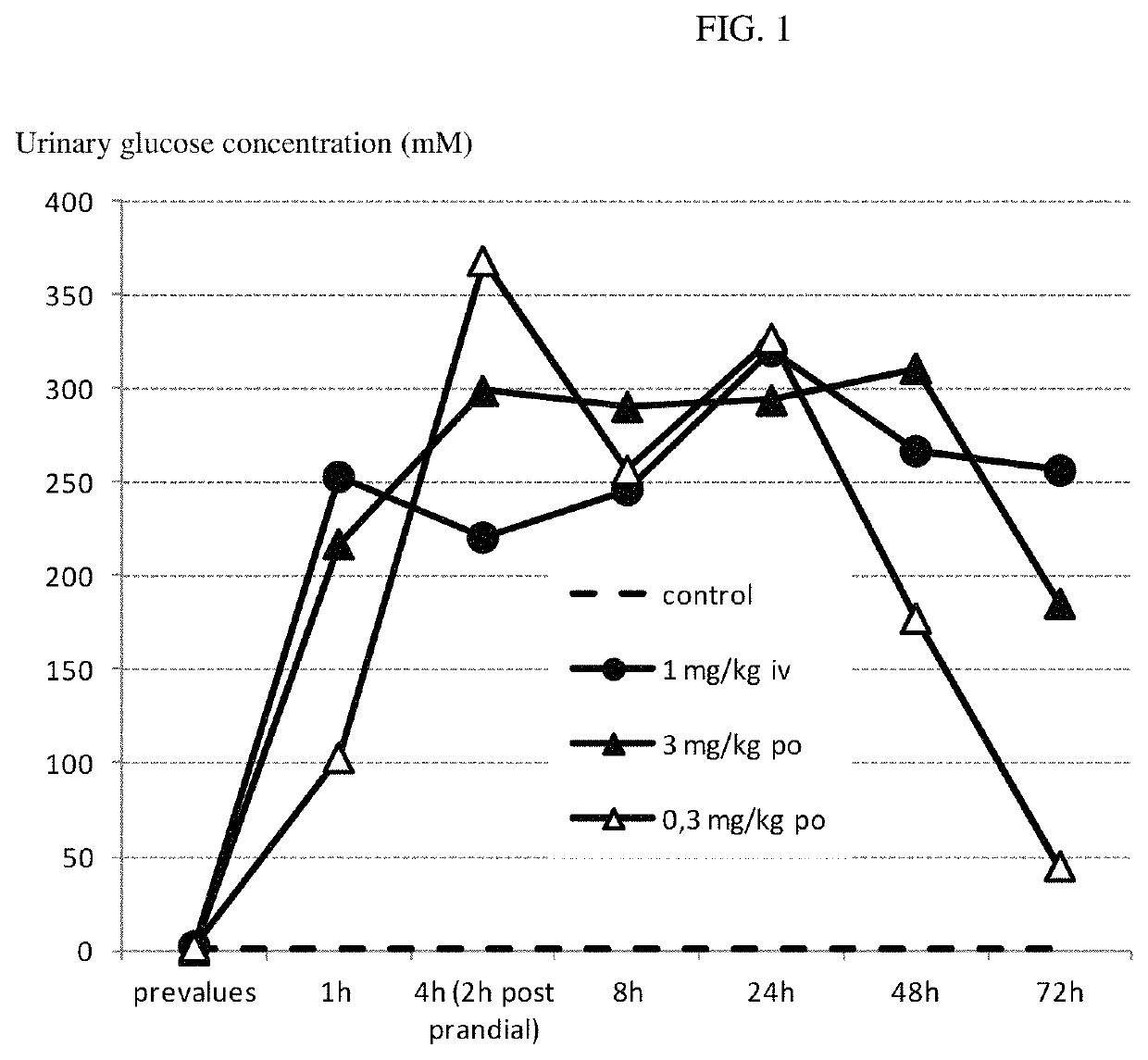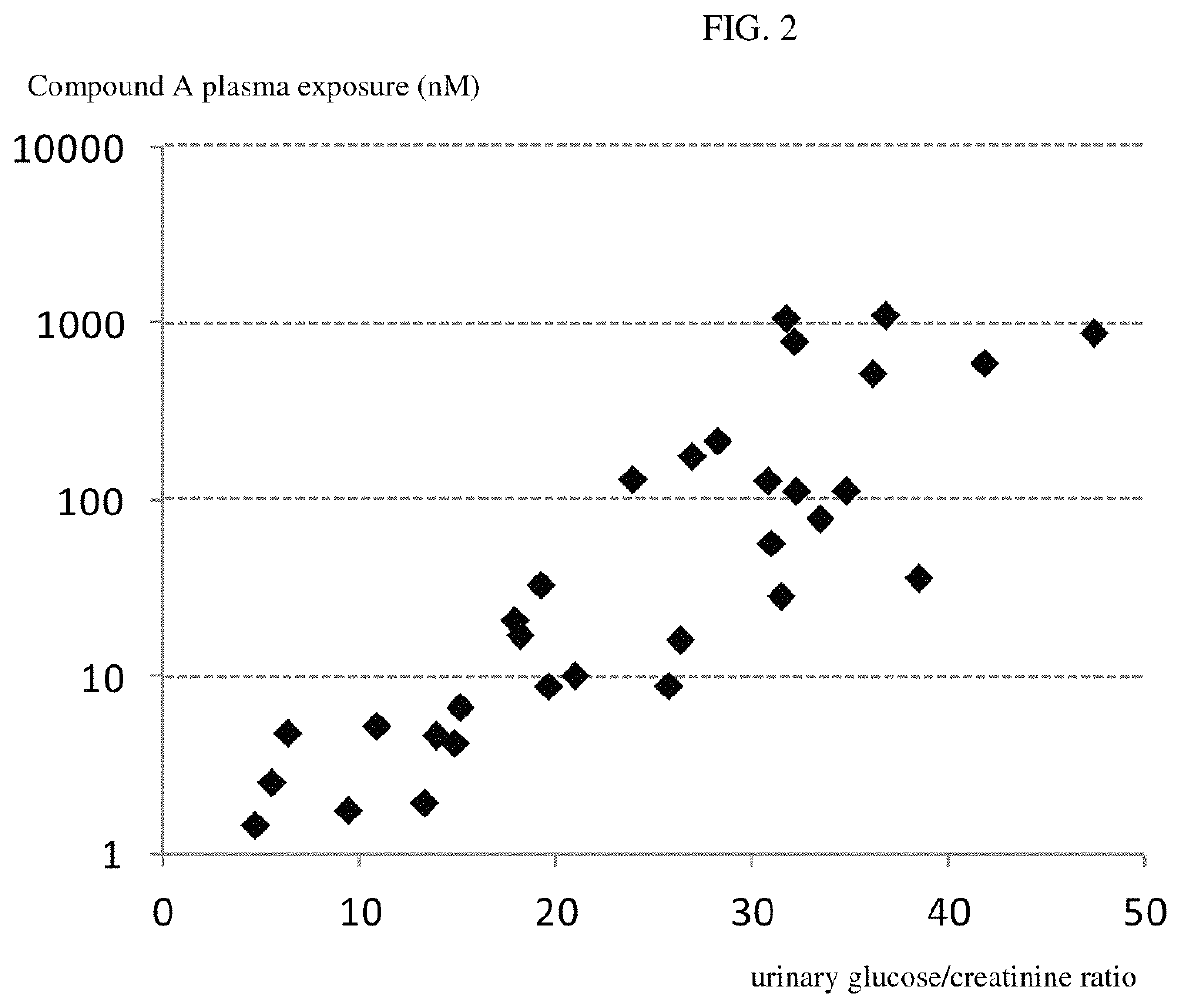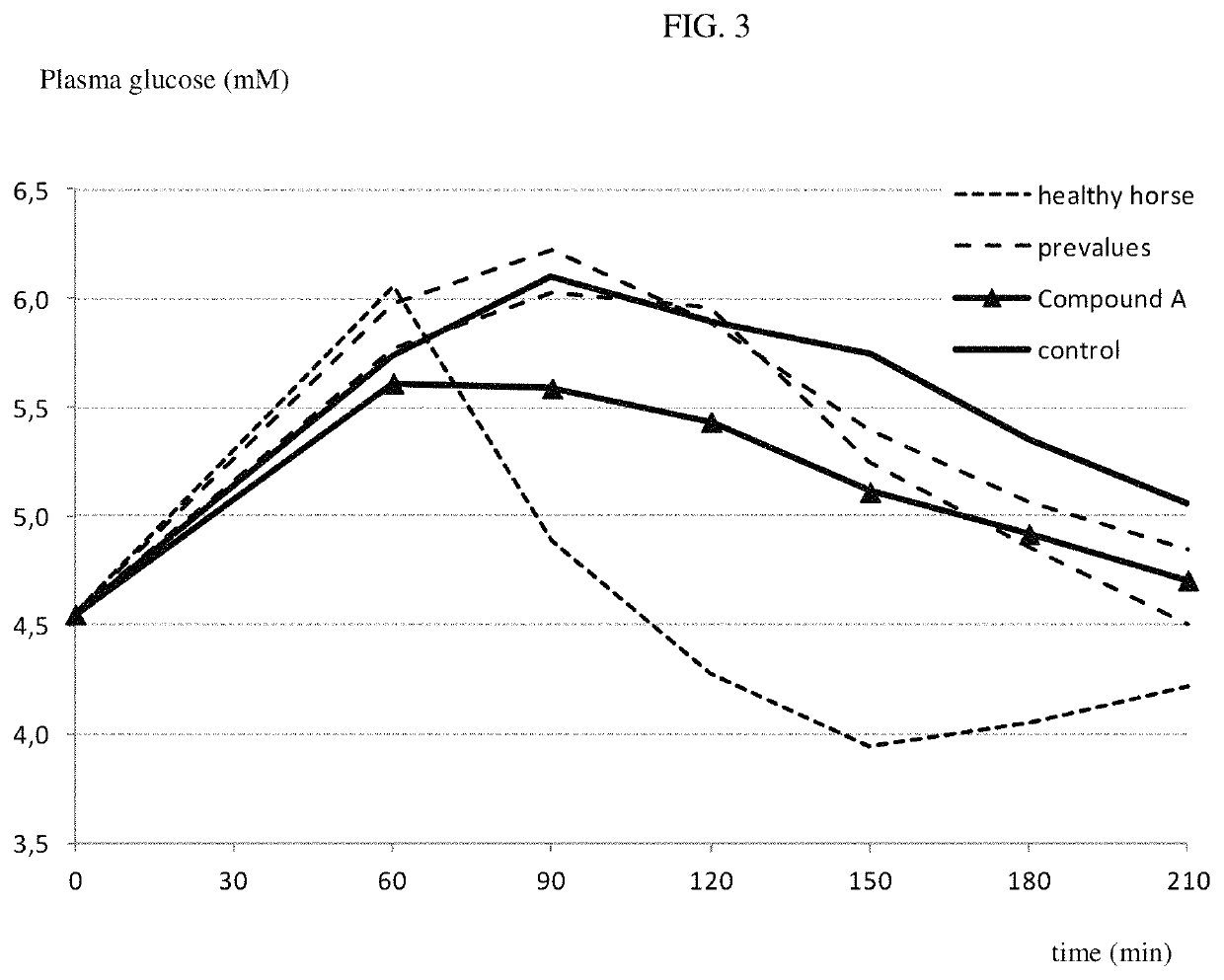Treatment of metabolic disorders in equine animals
a metabolic disorder and equine technology, applied in the field of veterinary medicine, can solve the problems of poor understanding of the mechanism by which insulin resistance and/or hyperinsulinemia cause ems and/or ppid, severe and life-threatening impact on the health of equine animals, and inability to cure, etc., to achieve the effect of reducing the content of pharmaceutically active substances, and high medicament stability
- Summary
- Abstract
- Description
- Claims
- Application Information
AI Technical Summary
Benefits of technology
Problems solved by technology
Method used
Image
Examples
example 1
inetics (PK) / Pharmacodynamics (PD) of Compound A Single Oral Dosing in Horses
[0262]Compound A was administered to overnight fasted horses. The groups (n=3 per group) received a single oral or intravenous (i.v.) administration of either vehicle alone (purified water, macrogol 15 hydroxystearate) or vehicle containing the one or more SGLT2 inhibitors at a dose of 0.3 mg / kg bodyweight and 3 mg / kg bodyweight orally and 1 mg / kg bodyweight i.v. PK / PD measurements were taken until day 3 after a single administration of compound A or its vehicle.
[0263]
TABLE 2Pharmacokinetic data, single doseParameter1 mg / kg i.v.0.3 mg / kg p.o.3.0 mg / kg p.o.tmax [hour]mean21Cmax [nmol / L]mean3533867AUC0→∞mean41251286929752[nmol · h / l]T1 / 2 [hour]mean7.98.58.2
[0264]Pharmacodynamic Data:[0265]A prominent increase of urinary glucose concentration was evident at all doses already 1 hour after administration (mean group values: controls 0.6 mmol / L; 1 mg / kg i.v. −253 mmol / L; 0.3 mg / kg po—103 mmol / L; 3 mg / kg po—217 mm...
example 2
t of Compound A on Urinary and Blood Glucose as Well as Glucose Tolerance after Repeated Dosing in Horses
[0269]Compound A was administered to freely fed normoglycemic, hyperinsulinemic, insulin resistant, obese horses, which exhibit an impaired glucose tolerance. The groups (n=4 per group) received a once daily oral administration of either vehicle alone (purified water, macrogol 15 hydroxystearate −0.2 mL / 100 kg and approximately 35 mL of apple sauce) or vehicle containing the one or more SGLT2 inhibitors in increasing doses up to 1 mg / kg bodyweight for 4 weeks. The treated horses received a daily dose of compound A at 0.1 mg / kg bodyweight for the first 7 days, followed by 0.2 mg / kg bodyweight, from day 20 the dose was increased to 1 mg / kg bodyweight. Urinary glucose and blood glucose were measured. Additionally, to evaluate the glucose tolerance, blood glucose was measured during an oral sugar test (OST, corn syrup 0.15 mL / kg) was performed. Blood was collected via jugular vein ca...
example 3
t of Compound A on Postprandial Blood Glucose in Horses
[0275]The following example shows the effect of compound A on postprandial blood glucose in horses. Compound A was administered to overnight fasted horses. The groups (n=3 per group) received a single oral or i.v. administration of either vehicle alone (purified water, macrogol 15 hydroxystearate) or vehicle containing the one or more SGLT2 inhibitors at a dose of 0.3 mg / kg bodyweight and 3 mg / kg bodyweight orally and 1 mg / kg bodyweight i.v. Two hours after compound administration horses were fed a test meal. The postprandial glycaemia is quantified 2 hours thereafter and significantly blunted by all doses of compound A, as shown in FIG. 4. Compound A is thus clearly capable of effectively reducing postprandial glucose levels in horses.
[0276]The efficacy of SGLT2 inhibition in accordance with the invention in the treatment of pathological fasting glucose and / or insulin and / or impaired glucose tolerance can be tested using clinic...
PUM
| Property | Measurement | Unit |
|---|---|---|
| 2Θ | aaaaa | aaaaa |
| 2Θ | aaaaa | aaaaa |
| 2Θ | aaaaa | aaaaa |
Abstract
Description
Claims
Application Information
 Login to View More
Login to View More - R&D
- Intellectual Property
- Life Sciences
- Materials
- Tech Scout
- Unparalleled Data Quality
- Higher Quality Content
- 60% Fewer Hallucinations
Browse by: Latest US Patents, China's latest patents, Technical Efficacy Thesaurus, Application Domain, Technology Topic, Popular Technical Reports.
© 2025 PatSnap. All rights reserved.Legal|Privacy policy|Modern Slavery Act Transparency Statement|Sitemap|About US| Contact US: help@patsnap.com



